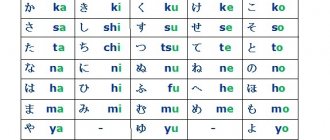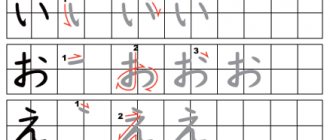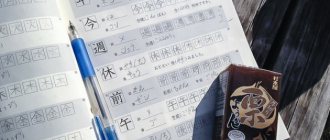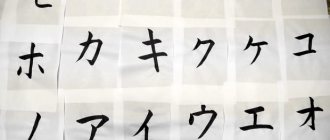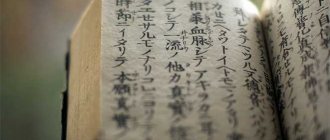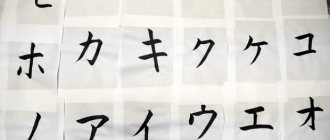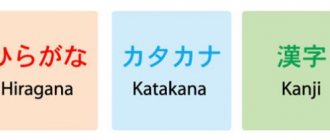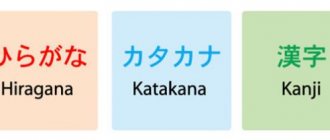Sakura is a symbol of Japan, everyone knows this. But this does not mean that other representatives of the flora are not worthy of our attention. Many places in the Land of the Rising Sun come alive in the spring with a riot of colors, and to celebrate the beauty of the blooming flowers, various festivals are held everywhere. And most often they occur in May-June. Today we want to introduce you to flowers, in honor of which entire festivals are held in Japan. Many of the places on this list are only 1-2 hours from Tokyo, so even if you're engrossed in language school, you can easily plan a day trip to admire the incredible spring scenery.
Shibazakura
Mount Fuji and Chichibu
Blooming from mid-April to late May, these pink, white, purple and lilac flowers cover the ground with a thick carpet. The festival is traditionally held at Mount Fuji from 08:00 to 17:00 at the Fuji Motosuko Resort. You can get to Shibazakura Park by bus, which departs from Shinjuku and arrives at the festival site in approximately 2.5 hours. In addition to Shibazakura, you can see other attractions and interesting events: for example, a photo competition will be held among those interested, and in the tents you can buy souvenirs and local delicacies.
If you're not interested in Mount Fuji, try going to Chichibu in Saitama Prefecture, where the Shibazakura Festival runs from mid-April to early May. More specifically, be sure to check out Shibazakura Hill in Hitsujiyama Park, where some 400,000 flowers grow. Last year the festival was also held from 08:00 to 17:00. Shibazakura Hill is a 15-20 minute walk from Yokoze Station or Seibu Chichibu Station.
Lycoris radiata
These unusual plants are distinguished by their elongated shape: the tall stem is practically devoid of leaves, but the bud at the very top of the head blooms with a bright scarlet spot. Licorice often grows near rivers, and their poisonous bulbs are used in pesticides used to treat nearby rice fields against parasites and pests. The bright shade of Lycoris radiata adds rich splashes of color not only to the forest floor, but also to the shady canopy of tree crowns. Although lycoris looks very pretty in a bouquet, in Japanese culture it is often associated with death and is used at funerals. So try never to give it as a gift!
One of the most popular places where you can enjoy the lycoris blossom is in Saitama Prefecture, Koma City.
Flowering time: September–October
Nemophila
Hitachi Seaside Park
From late April to mid-May, the Miharashi Hills in Ibaraki Prefecture's seaside park transform into an endless sea of blue that many tourists describe as a must-see place at least once in their lifetime. This festival, which locals call "Nemophile Harmony", runs from approximately April 23rd to May 15th. Hitachi Park is home to about 4.5 million nemophila - no wonder the hill is completely covered in a blue carpet! Hitachi Seaside Park is open from 09:30 to 17:00 and is only two hours from Tokyo.
Kurihama Flower Parkくりはま花の国
This park in Yokosuka is open all year round and offers different floral scenery in different seasons. Nanohana 菜の花 (rapeseed flower) season lasts until the end of April. You can also see ice cream tulips (a type of tulip, not ice cream tulips!), imperial dahlias and camellia flowers. The park is located a short distance south of Tokyo, making it a great destination for an enjoyable day trip. The entrance is free
Wisteria
Kameido Tenjin or Ashikaga Flower Park
The best place in Tokyo to admire the lush wisteria vines is Kameido Tenjin, located a 15-minute walk from Kameido Station (Sobu Line). The temple has a pond that delightfully reflects the floral landscape. The Wisteria Festival is held here from mid-April to early May.
If you want to get away from Tokyo for a while, Ashikaga Flower Park in Tochigi Prefecture is an even bigger area for wisteria growing! Not only the usual light lilac wisteria grows here, but also varieties of other shades: for example, light pink, white, yellow and even green. The park is also famous for the long wisteria tunnel. Typically, the Fuji Monogatari Festival (wisteria festival) is held from mid-April to late May. The park is open daily from 07:00 to 21:00 (tree lighting is on from 18:00 to 21:00).
Flower Festival (Hana Matsuri) in Japan
Buddhists in Japan celebrate Hana Matsuri
(Japanese 花祭) or Kambut(ts)u-e.
It is dedicated to the birth of Buddha, and is often referred to as the Flower Festival
.
Festive events dedicated to the birthday of the founder of one of the world's religions were known at the beginning of our era, although they gained popularity in the second half of the 19th century.
All ceremonial events held on this day in Buddhist temples in Japan, as well as on the streets of cities and villages, and in homes, are in one way or another connected with the legend telling about the birth of Buddha. Its summary boils down to the fact that Queen Maya, who saw a white elephant in a dream, received a message from the gods, which said that she would soon give birth to a son who would become the Enlightened One.
Shortly before giving birth, the queen went to her parents and along the way she found herself in the wonderful garden (or grove) of Lumbini, which was a place like paradise, where fragrant flowers bloomed around on the ground and on the trees. Queen Maya, bending down to pick a flower, suddenly went into labor. Her son was born in the middle of this wonderful garden of flowers.
At that moment, 9 dragons descended from the sky and washed the newborn’s head with flower nectar, and, according to another version, with tea from hydrangea petals. Minor discrepancies do not change the essence of the legend even when, according to one of these versions, the ablution occurred because the dragons touched the trees with their tails, and the dew and nectar that fell from them washed the Buddha’s head.
Everything that is said in the legend is reflected in the traditions of celebrating this day. In Buddhist temples, a special altar is decorated in which a statue of a small Buddha decorated with flowers is displayed. The statue is located in a bowl-pool. Each Buddhist, coming to the temple, brings flowers with him, approaches the altar and, using a special ladle, pours tea from hydrangea petals on the head of the statue of the newborn Buddha.
The monks brew this drink in large quantities, treating it to parishioners, who, in turn, can take the tea home with them, where they drink it with their family and friends. It is believed that Amatya or Amacha tea on this day is healing. The entire ceremony symbolizes the legendary events in the Lumbini garden.
On this day, cities are decorated with thousands of flowers, paper lanterns, and festive processions take place through the streets, the participants of which are dressed in elegant national clothes. Children are given special attention on this holiday, also dressed in bright colors. Among the marching Buddhists there is certainly a cart with a statue of a white elephant installed on it, which appeared to the Mayan queen in a dream. On the elephant is a seated baby Buddha, on whose head sweet flower tea is poured, and smartly dressed children approach the statue.
What is also very noteworthy about this holiday is that by April 8, sakura blooms in many regions of Japan and the first flowers on earth bloom, turning all the country’s parks and squares into marvelous gardens reminiscent of the Lumbini garden. The earth and all living things wake up from sleep and meet the rays of the spring sun.
Tulips
Showa Memorial Park
Showa Kinen Ko-en (Showa Memorial Park) is a huge park area located in the Tokyo suburb of Tachikawa (about half an hour's drive from Shinjuku). The annual flower festival begins in mid-March and lasts until the twentieth of May. There are many flowers growing here, however, the Japanese mark the blooming time of only one specific plant: the stunning tulips. When May arrives, you can also find poppies or field mustard blooming in Showa Park. The park is open to the public from 09:30 to 17:00.
Sakura
Of course, not a single leaf of flowers blooming in Japan during the spring season is complete without the most famous holiday, which is celebrated throughout the country. Given the incredibly short flowering time (usually about a week, but sometimes longer if the weather cooperates), the peak season lasts only a few days. Sakura is not only a harbinger of the changing seasons, but also a symbol of the fleeting nature of life. Cherry trees are planted throughout Japanese gardens and parks, and the most popular way to pay tribute to them is with hanami picnics held under the flowering branches. Usually accompanied by incredible amounts of alcohol, hanami is a time to relax and enjoy the joyful atmosphere that the first sunny days of the new year bring.
Flowering time: March–May
The flowering times in this article are not accurate and are only used as a rough guide for you and your Japan tour. The flowering time of different plants varies each year depending on location and weather, and the peak season can pass very quickly. Therefore, we would recommend that you carefully plan the location and time of your trip, based on forecasts for the beginning and peak of the flowering season.
Bunkyo Azalea Festival 2021
Tsutsuji Matsuri つつじ祭り, or Azalea Festival, takes place from April to May, offering a chance to enjoy thousands of colorful azalea flowers. Stroll through the gardens, enjoy the beautiful scenery and take a break at the small café by the pond. Admission : 200 yen
Sakura Tulip Festa
Sakura Tulip Festa is the largest tulip festival that takes place near Tokyo. In April, you can see more than 600,000 tulips of various colors here. The festival sticks to the Dutch theme, offering entertainment in the form of tulip picking, organ performances and even traditional Dutch clothing rentals. The journey from Nippori takes about an hour. Admission : Free *The 2021 festival has been canceled due to coronavirus.
When sakura blooms
The cherry blossom period is fleeting and lasts 7-10 days . In Okinawa, the beginning of the season usually occurs in January-February, in the central part of the country - in March-April, and in the north of Hokkaido - in May. The media notify residents about the predicted start dates of the spring event. There is an association in the country that regularly publishes a list of recommended places for Hanami.
Russian tourists wishing to join the celebrations must obtain a visa . To do this, you should contact the Embassy, Consulate General of Japan, Asian Visa Center. You can use the services of a representative or intermediaries represented by travel companies. A citizen of the Russian Federation is required to :
- International passport;
- copies of Russian passport;
- questionnaire;
- invitation;
- 2 photos;
- certificate from place of work;
- hotel reservation.
The visa is issued within 4 days , but if there is a need to obtain additional information, the process may take up to two weeks.
Where to go for hanami
Tokyo
Flowering period: late March - early April
Photo: Shutterstock.com
In the Japanese capital there are several large parks with sakura. Let's say Ueno, also famous for its zoo, which has about two and a half thousand animals. If you missed the main cherry blossom period in Tokyo, pay attention to Shinjuku Gyoen, where not only early but also late varieties of sakura grow. In both parks, flowering should begin in the last days of March. Shinjuku Gyoen is considered one of the best places for hanami in all of Japan.
Find a hotel
Five Lakes of Fuji
Flowering period: late March - early April
Photo: Shutterstock.com
In the vicinity of Mount Fuji there are parks where sakura grows in abundance. The five lakes (Yamanaka, Kawaguchi, Sai, Shoji and Motosu) are beautiful in themselves, and during the cherry blossom season they transform even more. Thus, from Lake Kawaguchiko there is a beautiful view of the mountain itself in any season. On the northern and eastern shores of this lake there are many cherry trees, which bloom in early April.
Find a hotel
Kyoto
Flowering period: late March - mid-April
Photo: Prasit Rodphan / Shutterstock.com
In the city of Kyoto on the island of Honshu there are also large parks, as if specially created for hanami. A water canal stretches along the city, along the banks of which cherry trees grow. This place is called the “Philosophical Road” (Path of Philosophy): it is assumed that a walk under the cherry blossoms will help you get away from vain thoughts and tune in to high thoughts.
The main place in Kyoto for hanami is Maruyama Park. The highlight is the luxurious looking weeping cherry tree, which is illuminated at night during the flowering period.
In the northern part of the city is the Haradani-en Garden. The territory of 13 square kilometers is privately owned, so visiting the garden is paid - the cost is 1,200 yen on a weekday and 1,500 yen on weekends and holidays, which is approximately 640 and 800 rubles, respectively. If you want a quieter and more secluded holiday, we recommend checking it out here.
Find a hotel
Tohoku region
Flowering period: late April - early May
Photo: Shutterstock.com
Tohoku is located in the northern part of the island of Honshu. Sakura blossoms here later than in other regions. The peak occurs at the end of April - beginning of May. In the small town of Kitakami there is a wonderful Tenshochi Park, which attracts tourists year after year.
Another interesting place is the city of Hirosaki, where sakura grows in the park around the ancient Hirosaki Castle. It was built four hundred years ago - in 1611 and is considered one of the important tourist sites.
Find a hotel
Showa Kinen Park
This large park in western Tokyo is popular for its many spring flower festivals, as well as recreational and sports opportunities. You can enjoy rapeseed flowers, tulips and azaleas at various times throughout the season. There is a small entrance fee, but there are certain days each year when admission to the park is free. You can check these days, as well as opening hours and additional information about the park on their website. Admission : 450 yen
These festivals around Tokyo are sure to please all flower lovers. Don't forget to subscribe to our blog to read more articles about what to see and experience in Japan!
